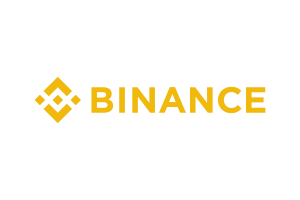Canva: How the hottest unicorn could grow even further with NFTs
A new mega unicorn is making waves in the startup community after raising $200 million at a whopping 40 billion valuation. Canva is one of the hottest fresh unicorns of recent months, making its founders Melanie Perkins and Cliff Obrecht — now a married couple — worth over $7 billion each.

Canva has been created to facilitate amateur designers to create and share their projects online through a freely accessible and user-friendly interface, giving them nearly the same artistic power as professional designers.
Since its first year online in 2012, Canva already started strong with over 750,000 users taking advantage of the platform’s numerous templates and shared assets.
In 2014, Canva surprised the web with another turning point, which has since then changed the design community. Canva had introduced Canva For Work, now Canva Pro, making the platform a fundamental resource not just for private users, but also for professional content creators and marketers.
As proof of Canva’s importance for branding and marketing, there are now over 500,000 corporate teams — including well-known names such as American Airlines, CBRE, Intel, Kimberly-Clark, Skyscanner, Zoom, and Live Nations — who customize their content for social media assets, sales, human resources presentations, and any other graphical design resource with Canva.
Canva’s financial growth
For a couple of years now, every time Canva increased its valuation in a fresh fundraising round, the growth seemed so astronomical that it seemed impossible the company could replicate it. And yet, time and time again, Canva continues to double its valuation.
In June 2020, Canva was valued at $6 billion, raising a total of $60 million for that investment round and doubling its previous valuation of $3.2 billion.
In April 2021 Canva’s valuation grew to $15 billion, following a $71 million investment round. Finally in September 2021, Canva reached a $40 billion valuation, closing the last investment round for a total of $200 million.
Canva is certainly not done, either. The team is planning more and more features to streamline the interaction between those who commission designs and those who create them. The idea behind it is not to replace existing design tools — rather, it aims to boost collaboration (and stamp down the annoying back-and-forth pinging for tiny design changes!).
The co-founders, for their part, seem to be quite satisfied with their wealth and aim to give 30% of their own shares for charitable purposes. Going public would certainly make that goal easier, and it’s definitely not unreasonable to expect a SPAC merger or IPO for Canva in the near future.
Going even further
Canva’s growing popularity and financial value are a function of the improvements to the platform itself. Starting as a platform for design newbies, Canva widened its offering to include all sorts of templates like menus, resumes, business cards — then moving into the digital with videos, social media posts, newsletter templates and much more. A marketing department can essentially use Canva for any day-to-day item it needs, and that’s what propelled its growth.
The last two years of the work from home revolution have surely boosted Canva’s success as well. An online platform where users are able to work concurrently is a fundamental instrument for remote teams.
Still, the corporate design niche is all but tapped out. But NFTs and its movement of every-day graphical arts could be just what Canva needs to continue its skyrocketing growth. NFTs are a grass-roots movement first, allowing digital artists to make a living by selling their art through a well-established and permissionless channel.
The ability to share and foster communities are some of the most important attributes of Canva’s business model. NFTs neatly fit into this, which is why fostering the creation of NFTs and integrations with marketplaces might open Canva’s platform to a new promising customer segment. As a result, it will increase the platform’s product offering and value.
Platforms for trading NFTs already exist, but the possibility of Canva’s users to prepare and trade their art as NFTs would clearly be a step forward in terms of safety and revenue opportunities.
As an example, if designers and artists would be able to use Canva as a tool for creating NFTs, these could be later traded on platforms such as Envoy, a blockchain platform where users can offer their NFTs as unique pieces and collectibles. Thanks to Envoy, customers are even able to directly connect with artists and purchase customized or available art pieces including pictures, videos, and music. In this way, customers have a guarantee of buying valuable and unique assets through a transparent method, while artists are rewarded fairly.
As we have seen, Canva is nowadays also used by companies like Live Nation for creating assets for upcoming rock concerts. In such a scenario, why not also use Canva for movie cover images on platforms like Raiinmaker?
Raiinmaker is a blockchain platform where influencers can be rewarded for sharing content and creating hype around a project.
The platform was born after the founders developed a documentary and generated over $1 million in sales thanks to organic word of mouth from the community, and have decided to explore this model for marketing campaigns.
With Raiinmaker, the objective is to facilitate customers to create marketing campaigns thanks to collaborations with influencers, who generate content about the product, share it on social media, and are later rewarded thanks to a blockchain system.
So far Raiinmaker has mainly promoted movies, series, and videos. Given that these are all art pieces that need accurate designing to be promoted, and integration with Canva would be a win both for Raiinmaker content creators and for Canva’s user acquisition plan.
Canva’s Future is bright
As technology moves forward, Canva has a number of opportunities for growth. One of them could be to lean on the professionals and offer more and more advanced tools. But the other may involve going back to their roots and riding the way NFTs are putting art into the mainstream. The adoption of blockchain technology and collaborations with NFT platforms seems as an obvious step that will sooner or later change the design landscape — exactly as Canva has done until now.









